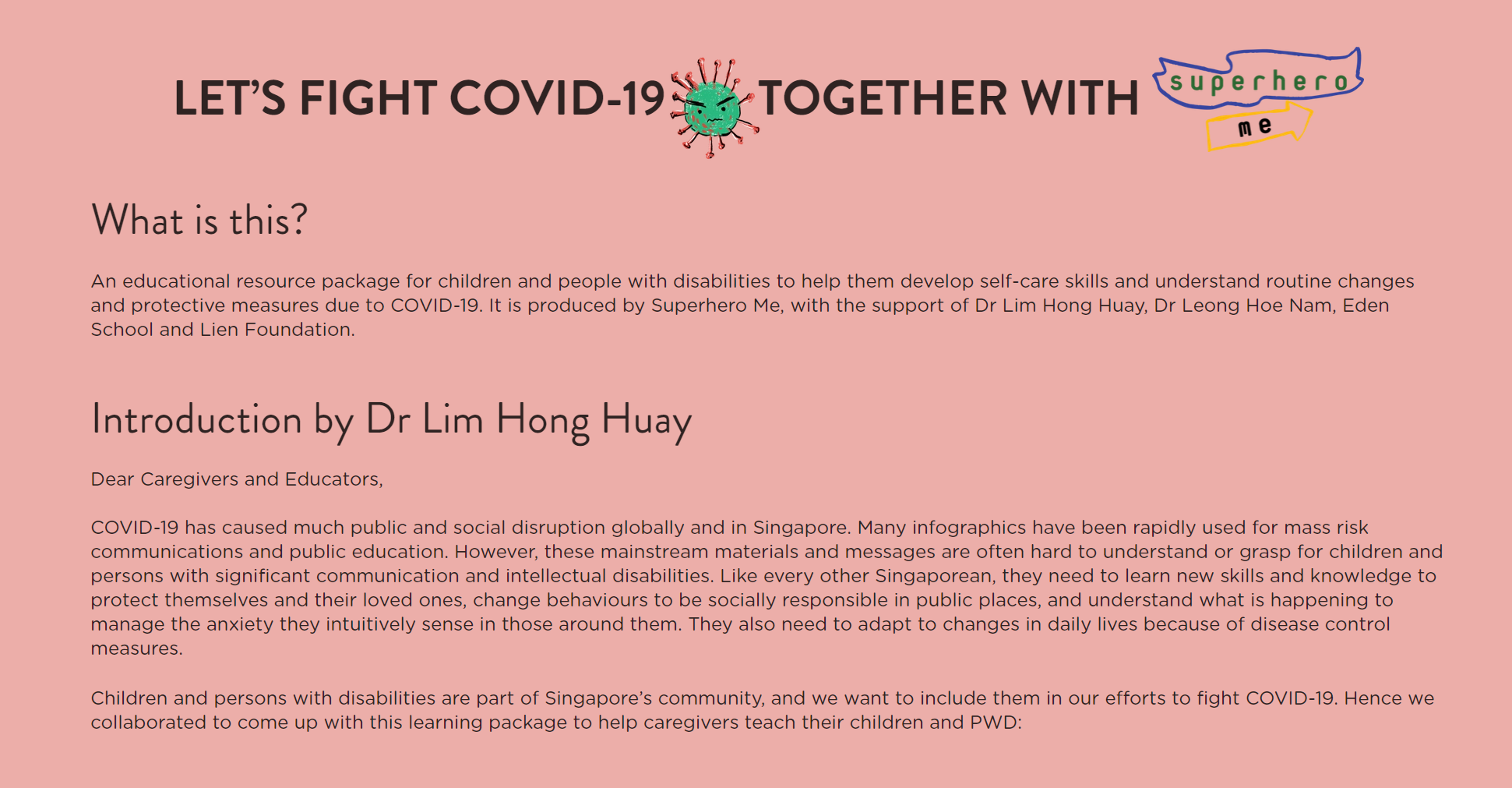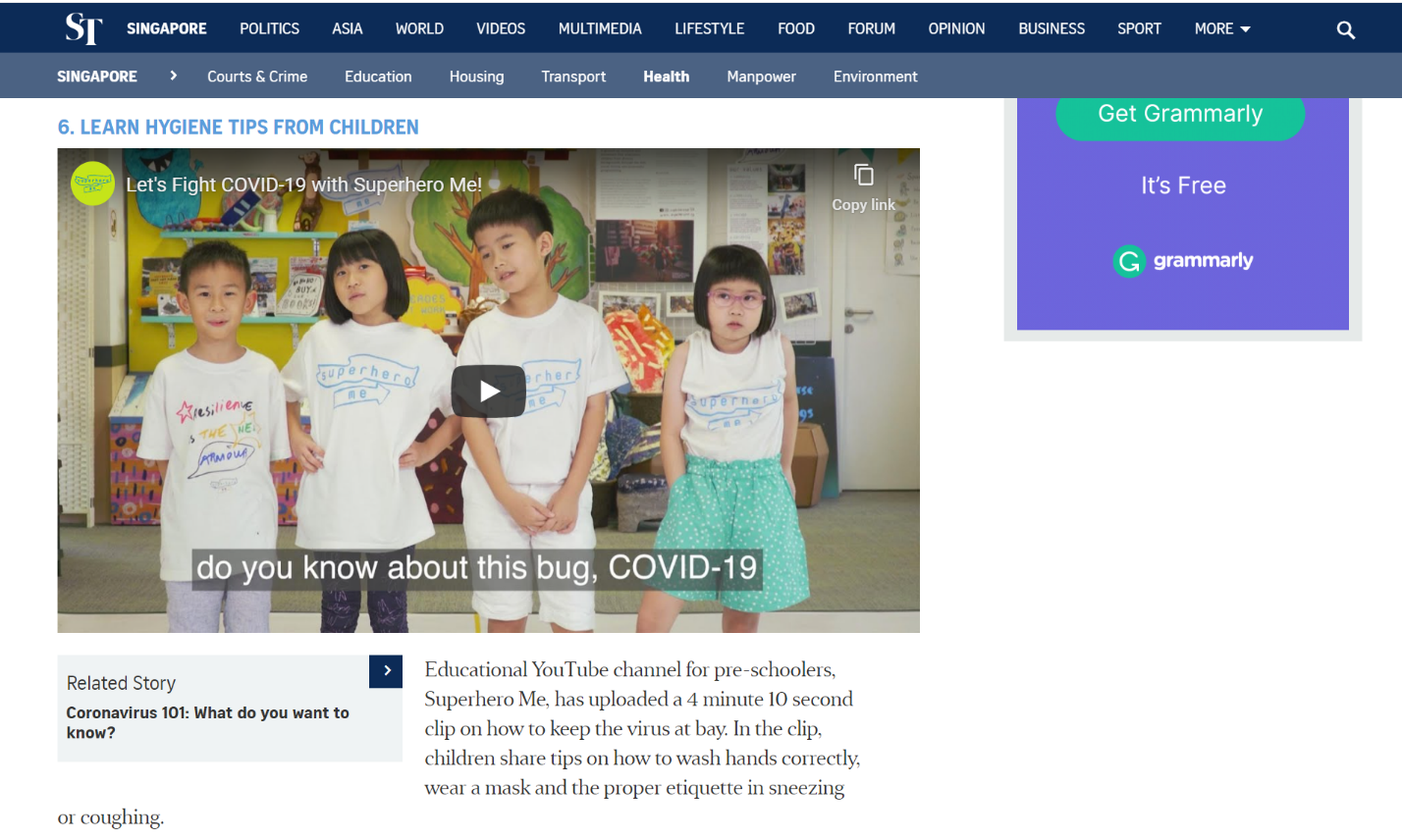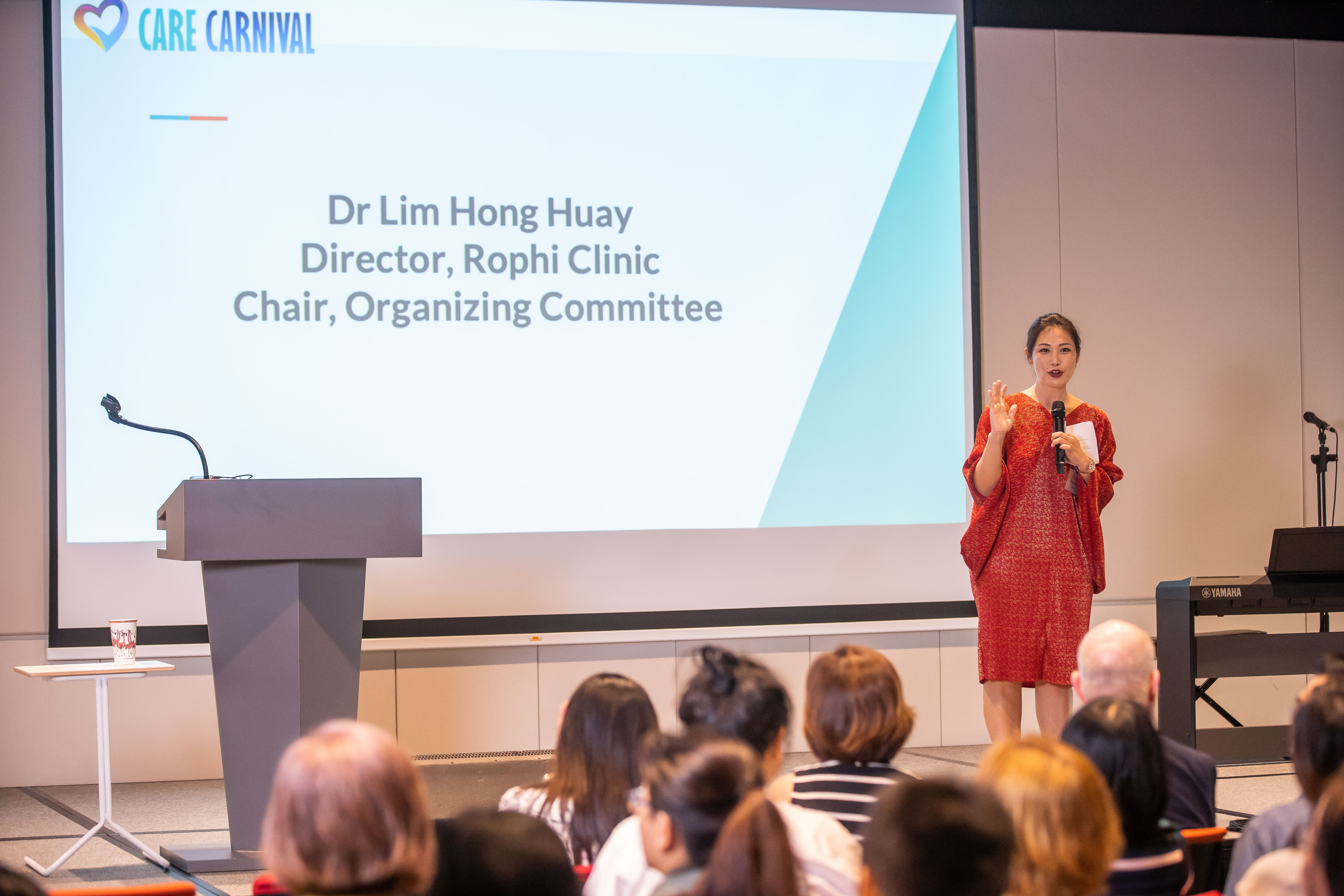Dr Lim Hong Huay, an epidemiologist and developmental pediatrician, has two children with disabilities and understands the challenges of being a caregiver. We spoke with her to learn more about the COVID-19 toolkit that she developed, and the importance of peer support for caregivers.
The COVID-19 pandemic has led to many new rules to follow – from social distancing to having to wear masks when we go out. These can be difficult for persons with disabilities and young children to adapt to.
That is why Dr Lim Hong Huay has worked with Superhero Me, an inclusive arts movement, the Eden School, and Lien Foundation to create a resource package, to help these individuals understand what’s happening and to equip them with the knowledge to protect themselves.
The COVID-19 Toolkit is one of the many efforts by Dr Lim to provide better peer-to-peer support for caregivers. Over the years, she has worked on several projects, including last year’s Care Carnival and the ECHO (Early Childhood Holistic Outcome) framework. Dr Lim is also a board member of SG Enable.
We spoke with her to learn more about their latest project, and the importance of peer-to-peer caregiver support at all times.
1. Can you tell us more about the COVID-19 Toolkit?
Dr Lim: Most of the information found in mainstream media is difficult to understand for persons with disabilities, more so for those who struggle with communication and have intellectual disabilities.
Like every other Singaporean, they need to understand what is happening in order to manage the anxiety they sense in those around them. They also need to learn new skills, and adapt to changes implemented because of the disease control measures.

A screenshot of the Covid-19 Toolkit article on the Superhero Me website
Thus, we created this learning package comprising videos, slides and comic strips – in which information is easier for persons with intellectual disabilities and children to understand.
Since its release in Feb 2020, the materials have been well received by parents, educators, allied health professionals and caregivers. It also earned several mentions in the local media.

A screenshot of The Straits Times website showing a video link to a clip used in the COVID-19 Toolkit that explains what COVID-19 is.
2. You were closely involved in the SARS outbreak in 2003 – experiencing it first-hand as a patient and a doctor. How has that experience impacted the work that you do in the disability community for COVID-19?
The experience with SARS helped me understand the challenges faced by both patients and doctors. Although SARS is more severe than COVID-19, the experience of being isolated and suffering alone is equally painful.
When I first heard about COVID-19 in January 2020, I realised that this disease, while milder than SARS, will threaten lives and livelihoods. My epidemiological training convinced me that the fight against COVID-19 will require everyone’s cooperation. That is why, together with my husband, who is an infectious diseases specialist, I jumped into working on public education about the virus.
3. In your disability advocacy, why have you decided to take a “caregiver help caregiver” approach?
Only caregivers truly understand what it is like to be a caregiver. Sadly, no matter how much you read, train, or learn from others, unless you have the disability or you are a caregiver, you will not be able to fully relate to the emotional, mental, physical and real-life challenges of a person with disabilities or a caregiver.
Isolation is often the greatest bane of being a caregiver, and being connected will be good for caregivers’ mental and emotional health. When we rise above our own struggles to help another person, we also feel encouraged and empowered. We can also better connect with one another to build a sense of community.
4. In your opinion, what kind of peer-to-peer support is the most effective?
It’s important to be empathetic, respectful, accepting and non-judgemental, especially of the choices caregivers make for their families and loved ones. If there is a good match in terms of the type of diagnosis, or belonging to the same ethnic or cultural community, that would really help as well.
We want to be sharing evidence-based knowledge and practices that focuses on improving the quality of daily living routines leading to measurable improvements for everyone involved – be it the caregiver, family members, or the person with disabilities.
5. What are some of the other recent projects you’ve worked on to support the disability community/sector?
Prior to this project, I led a team of caregivers and allies to organise the inaugural Care Carnival in November 2019. The event, held at the Enabling Village, gave caregivers tips on how to help their children with special needs learn and communicate better at home. They were also connected with different support groups, and learnt about SG Enable’s caregiver support initiatives. Caregiver support group leaders and caregiver advocates also participated in a focus group discussion with disability sector professionals and community partners.

Dr Lim Hong Huay giving a talk at Care Carnival 2019.
Currently, I am advisor to the national roll-out of the child outcome measurement system for the Early Intervention Continuum. The child outcome measurement system is part of the ECHO (Early Childhood Holistic Outcome) framework, with emphasis on functional skills in everyday life, such as encouraging toddlers to finger-feed themselves with cereal or raisins.
6. Let’s now look at the bigger picture of disability. In terms of making Singapore society more inclusive, what do you think is the top issue or concern that should be addressed?
The top issue is educational segregation. In the pre-school sector, early childhood education and early intervention are increasingly aligned in vision and mission with respect to inclusion.
However, from the ages of 7 to 18, special needs children are separately educated from mainstream children. This encourages the perception that if a child has special needs, he or she does not belong to the mainstream peer groups. This inadvertently translates to adults thinking that a person with disability does not belong to the mainstream society, resulting in ‘post-18’ issues in terms of poor vocational outlook and a lack of community inclusion.
When a neurotypical child has the opportunity to connect with a special needs child in his or her formative years, they will more likely be able to do so than when they are adults.
Similarly, when a special needs child is given the opportunity to connect with non-special needs children, and taught the skills to survive in a mainstream environment, they will more likely be independent people who can build rewarding relationships in their adulthood.
7. Any plans for more caregiver peer-to-peer support initiatives?
We have learnt a lot from the focus group discussion at the Care Carnival, and will continue to engage and connect with caregiver support groups, community and public stakeholders in more collaborative efforts in the next two years.
Resources for persons with disabilities and caregivers
- SG Enable - An agency dedicated to enabling persons with disabilities.
- Caregiver Support Groups – A school for persons on the autism spectrum.
- Lien Foundation - A philanthropic house that seeks to foster exemplary early childhood development and eldercare excellence with audacious creativity.
- Superhero Me – A non-profit inclusive arts movement that arms children from special needs and less privileged communities with creative confidence.
- NeuroDiverCity - an inclusive blog developed by a caregiver that features resources for special needs parents and individuals.